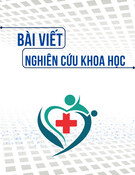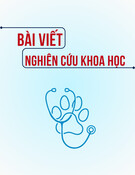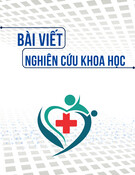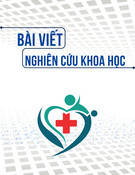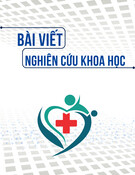
Review Article
Theme: Emerging Role of Pharmacogenomics (PGx) and Big Data on Development of Biologics
Guest Editors: Shraddha Thakkar and Nisha Nanaware-Kharade
Pharmacogenomic Biomarkers: an FDA Perspective on Utilization in Biological
Product Labeling
Robert N. Schuck
1,2
and Joseph A. Grillo
1
Received 19 November 2015; accepted 15 February 2016; published online 24 February 2016
Abstract. Precision medicine promises to improve both the efficacy and safety of therapeutic products by
better informing why some patients respond well to a drug, and some experience adverse reactions, while
others do not. Pharmacogenomics is a key component of precision medicine and can be utilized to select
optimal doses for patients, more precisely identify individuals who will respond to a treatment and avoid
serious drug-related toxicities. Since pharmacogenomic biomarker information can help inform drug
dosing, efficacy, and safety, pharmacogenomic data are critically reviewed by FDA staff to ensure
effective use of pharmacogenomic strategies in drug development and appropriate incorporation into
product labels. Pharmacogenomic information may be provided in drug or biological product labeling to
inform health care providers about the impact of genotype on response to a drug through description of
relevant genomic markers, functional effects of genomic variants, dosing recommendations based on
genotype, and other applicable genomic information. The format and content of labeling for biologic
drugs will generally follow that of small molecule drugs; however, there are notable differences in
pharmacogenomic information that might be considered useful for biologic drugs in comparison to small
molecule drugs. Furthermore, the rapid entry of biologic drugs for treatment of rare genetic diseases and
molecularly defined subsets of common diseases will likely lead to increased use of pharmacogenomic
information in biologic drug labels in the near future. In this review, we outline the general principles of
therapeutic product labeling and discuss the utilization of pharmacogenomic information in biologic drug
labels.
KEY WORDS: biomarkers; Pharmacogenomics; precision medicine.
INTRODUCTION
Precision medicine may broadly be defined as the
tailoring of medical treatment to the individual characteristics
of patients [1]. The potential to improve patient outcomes
through precision medicine has led to much excitement
among scientists, clinicians, and patients alike. From the
Food and Drug Administration’s (FDA) perspective, preci-
sion medicine promises to increase benefit and reduce risk of
medical products [2]. This is accomplished by better
informing why some individuals respond well to a drug and
some experience adverse reactions, while others do not. In
addition, precision medicine may be applied to drug devel-
opment to improve the probability of a drug’s success and
reduce overall development costs. Given these potential
benefits, FDA has been proactive in implementing regulatory
processes and policies to meet the challenges necessary to
advance precision medicine research and implementation into
patient care [2].
Pharmacogenomics is a key component of precision
medicine that can be used to select an optimal dosage for
patients, more precisely identify individuals who will respond
to a treatment, and avoid serious drug-related toxicities. For
example, when drugs are metabolized by polymorphic drug-
metabolizing enzymes, utilization of pharmacogenomics aids
in prospectively selecting a dosage that will be both safe and
effective for each patient [3]. More recently, numerous
Btargeted^therapies, which benefit smaller, molecularly
defined subsets of patients have been approved and are now
being used clinically. These targeted drugs often require
pharmacogenomic tests to identify the appropriate patient
population for whom the drug is indicated [4]. Although the
current landscape of molecularly targeted therapies is largely
limited to oncology, targeted therapies in non-oncology fields
are rapidly expanding [4]. In addition, pharmacogenomic tests
can be applied clinically to identify patients that are more
likely to experience drug-related adverse events and prevent
1
Office of Clinical Pharmacology, Office of Translational Sciences,
Center for Drug Evaluation and Research,U.S. Food and Drug
Administration, Silver Spring, Maryland, USA.
2
To whom correspondence should be addressed. (e-mail:
Robert.Schuck@fda.hhs.gov; )
The AAPS Journal, Vol. 18, No. 3, May 2016 ( #2016)
DOI: 10.1208/s12248-016-9891-4
573 1550-7416/16/0300-0573/0 #2016 American Association of Pharmaceutical Scientists

use in these patients, where the benefit-risk profile of the drug
is not favorable [5]. Therefore, pharmacogenomic informa-
tion is specifically reviewed by FDA staff to ensure effective
use of pharmacogenomic strategies in drug development and
appropriate incorporation into product labels [6].
Regulations for labeling of prescription drugs and biolog-
ical products require that prescription drug labeling must
contain a summary of the essential scientific information needed
for the safe and effective use of the drug, and that labeling must
be informative and accurate [7]. Pharmacogenomic information
may be useful in labeling to inform health care providers about
the impact (or lack of impact) of genotype on phenotype
through description of relevant genomic markers, functional
effects of genomic variants, dosing recommendations based on
genotype, or other applicable genomic information [8].
GENERAL LABELING PRINCIPLES FOR
PRESCRIPTION DRUGS AND BIOLOGICAL
PRODUCTS
The initial drug labeling distributed at the time of drug
approval contains information derived from studies that are
submitted in support of the application (New Drug
Application (NDA) or Biologics License Application
(BLA)) to market the drug. Data are critically reviewed by
FDA staff, and a summary of the essential scientific informa-
tion needed for the safe and effective use of the drug is
agreed upon by the FDA and the submitting pharmaceutical
company (applicant) for inclusion in labeling. The informa-
tion and clinical data that are ultimately included in the drug
labeling come from both adequate and well-controlled trials
designed to demonstrate safety and efficacy of the therapeutic
product and from additional studies that help inform the most
appropriate use of the product. These studies may include
clinical pharmacology studies such as dose ranging studies,
pharmacokinetic/pharmacodynamic studies, drug-drug inter-
action studies, organ impairment studies (e.g., studies evalu-
ating the impact of hepatic impairment or renal impairment
on drug pharmacokinetics), pharmacogenomics studies, and
many other clinical and non-clinical studies.
Regulations require that labeling must be updated when
new information becomes available that causes the labeling to
become inaccurate, false, or misleading [7]. Therefore,
updates may be made to drug labels following approval based
on data accrued in the post-market setting. Post-marketing
labeling changes may come about by multiple mechanisms.
The FDA or the application holder may request to change
labeling based on updated safety or efficacy data.
Alternatively, under Title IX of the Food and Drug
Administration Amendments Act of 2007 (FDAAA), FDA
may compel changes to previously approved labeling when
new safety information becomes available for the drug. New
safety information may come from clinical trials, adverse
event reports, peer-reviewed biomedical literature, and other
appropriate scientific data [9]. As with the original NDA/
BLA application, a multidisciplinary team at FDA evaluates
potential new safety information in order to determine if it
should be incorporated into a drug’s labeling. Many factors
are considered when deciding whether or not to revise the
labeling of an approved therapeutic product (as well the final
updated language); these include the reliability of the data,
magnitude of risk, seriousness of event, and others [10]. Prior
to making a labeling change, a consensus must be reached
among the FDA review team followed by agreement with the
application holder [10].
LABELING PRINCIPLES—PHARMACOGENOMICS
Pharmacogenomic information is included in labeling for
the same purpose as other types of information and data—to
help provide information to the health care provider that aids
in safe and effective use of the product. Therefore,
pharmacogenomic information about the impact, or lack
thereof, of genotype on phenotype should be included in
labeling if it is clinically meaningful and informs prescribing
decisions by health care providers [8]. General information
that may be useful to health care providers in assessing the
clinical relevance of the pharmacogenomic effect, such as
frequencies of the relevant alleles, genotypes, phenotypes,
and other genomic markers, is frequently included in labeling
as well. The labeling may also indicate whether or not a
genomic test is available and whether testing should be
considered, is recommended, or is necessary [8]. For example,
the inclusion of pharmacogenomic information in labeling is
useful to optimize dosing for drugs that exhibit variable
pharmacokinetics secondary to polymorphic drug metabo-
lism, activation, or transport, and to optimize patient selection
for drugs that may have poor efficacy or poor tolerability in
certain genetic subgroups [11].
Pharmacogenomic information that may be useful to
inform dosing often includes the effect of genotype on
pharmacokinetic parameters and/or pharmacodynamic end-
points. In addition, a description of the functional effects of
genomic variants (or lack thereof) in drug-metabolizing
enzymes or transporters on important pharmacokinetic
parameters is often appropriate when the drug is a known
substrate of a polymorphic drug-metabolizing enzyme or
transporter, and data are available. Inclusion of this informa-
tion is analogous to describing the impact of other intrinsic
(e.g., organ impairment, sex, age) or extrinsic (e.g., drug-drug
interactions) factors on pharmacokinetic or pharmacody-
namic parameters in order to help inform the optimal dose
in individual patients. In addition, pharmacogenomic infor-
mation may also provide insight into dose optimization for
complex scenarios where a polymorphism affects the magni-
tude of a known intrinsic or extrinsic factor on drug exposure.
Therefore, specific dosing recommendations based on geno-
type may be included in labeling, depending on the data
supporting the magnitude of impact of genotype on pheno-
type and whether or not the effect of dose adjustment has
been evaluated.
As stated previously, in addition to aiding in prospective
identification of the optimal dose for individual patients,
pharmacogenomic information may help more precisely
identify which patients will benefit from a therapeutic product
and which patients are at higher risk for serious adverse
events. Drugs with polymorphic drug targets may exhibit
different efficacy profiles across genotypes, and in these cases,
pharmacogenomic information may help health care pro-
viders identify a more appropriate therapy or therapeutic
class of drug for patients based on likelihood of response. The
development and approval of numerous targeted therapies in
574 Schuck and Grillo

recent years, which may offer substantial benefits over
existing therapies, but only in molecularly defined subsets of
patients, has greatly increased the prevalence of using
pharmacogenomics in labeling to identify the appropriate
patient population for a drug [4,11]. Moreover, focus on
preventing drug-related toxicities in susceptible patients has
led to inclusion of pharmacogenomic information related to
drug safety and adverse events in numerous drug labels.
Data supporting the inclusion of pharmacogenomic
information in labeling is derived from the same sources as
other information included in the label—from studies sub-
mitted with the original NDA or BLA or from post-market
data from clinical trials, adverse event reports, peer-reviewed
biomedical literature, and other appropriate sources.
Inclusion of pharmacogenomic information to guide dosing
relies on data sources similar to other intrinsic or extrinsic
factors. These may include dedicated gene-drug interaction
studies or a clear association between genotype and pharma-
cokinetics or pharmacodynamics demonstrated by other
means. For targeted therapies that are approved for a
molecularly defined group of patients, the data supporting
inclusion of the biomarker information in labeling, and the
context in which biomarker information is included in
labeling (e.g., the section and whether or not testing is
compulsory), is generally dependent on the design and
outcomes of the pivotal clinical trials. For more discussion
regarding the use of molecular biomarkers in clinical trials,
and the potential impact on labeling, we refer the reader to
the FDA Draft Guidance for Industry—Enrichment
Strategies for Clinical Trials to Support Approval of Human
Drugs and Biological Products [12]. A brief description of the
evidence (i.e., the pharmacogenomic studies) supporting the
impact of genotype on phenotype, or a reference to the
appropriate published literature, may be provided in labeling
if it informs prescribing decisions. As with all other informa-
tion, many factors are considered when deciding whether or
not to include pharmacogenomic information in initial drug
labeling, or to update existing labeling. Great care is taken by
the applicant and regulators when proposing the use of
pharmacogenomic data to inform patient selection, since
inclusion of this information may ultimately limit the patient
population who has access to the drug [2].
BIOLOGICAL PRODUCT LABELING
As with small molecule drugs, the labeling requirements for
biological products (e.g., monoclonal antibodies, therapeutic pro-
teins, and enzyme replacement therapies) for human use are
described under 21 C.F.R. § 201.56. Therefore, the format and
content of labeling for biologic drugs will generally follow that of
small molecule drugs. Similarly, most of the principles for including
pharmacogenomic information in labeling of small molecule drugs
will also apply to biologic drugs. There are, however, some notable
differences in pharmacogenomic information that might be consid-
ered useful for biologics in comparison to small molecules.
Approximately half of pharmacogenomic information that is
included in drug labeling describes the impact of polymorphic
drug-metabolizing enzymes (or lack thereof) on the drug’s
pharmacokinetic properties. Biologic drugs are administered
parenterally, and oral administration is not possible because
gastrointestinal degradation and other factors limit bioavailability.
Following administration, biologic drugs are metabolized to
peptides and amino acids. Mechanisms of elimination include
proteolysis by the liver and the reticuloendothelial system, target-
mediated elimination, and nonspecific endocytosis; these pro-
cesses are not impacted by known genetic polymorphisms [13].
Since biologic drugs are not administered orally and are not
substrates for membrane transporters or polymorphic drug-
metabolizing enzymes, there are not known pharmacogenomic
liabilities that lead to variable bioavailability or metabolism.
Consequently, pharmacogenomic information has not demon-
strated utility to describe variable pharmacokinetics and alterna-
tive dosing secondary to these factors for any currently marketed
biologic drugs. However, genetic predisposition to immunogenic-
ity and formation of antidrug antibodies may impact the
pharmacokinetic profile of some biologic drugs. Moreover, efforts
are underway to reformulate biologic drugs for non-invasive
routes of administration [14], and pharmacogenomic biomarkers
mayultimatelybeidentified that impact the pharmacokinetic
properties of these reformulated products.
Since the pharmacokinetic properties of biologic drugs are not
impacted by known pharmacogenomic factors, the
pharmacogenomic information in biologic drug labeling generally
describes the impact of pharmacogenomics on the drug’s safety or
efficacy profile. Of the currently marketed biologic drugs with
pharmacogenomic information in the product labeling, the majority
of pharmacogenomic information describes the impact of a
molecular alteration in the drug target or biological pathway on
efficacy (Table I). For these targeted therapies, the
pharmacogenomic information helps identify the patient popula-
tion in which the drug has demonstrated safety and efficacy.
Therefore, in most cases, the information is described in the
Indications and Usage section of labeling, and there is a
corresponding FDA-approved in vitro companion diagnostic device
that is cross-labeled with the biologic drug. Pharmacogenomic
information may also appear in the Clinical Studies section of
labeling to describe the patient population that was evaluated in
clinical trials, the Clinical Pharmacology section to provide
additional information on the molecular alteration, or other
appropriate sections of labeling.
Another frequent purpose for inclusion of pharmacogenomic
information in labeling of biologic drugs is to describe potential
safety issues. For example, the most frequent pharmacogenomic
biomarker related to drug safety that is included in labeling of
biologic drugs is glucose-6-phosphate dehydrogenase (G6PD)
deficiency, a genetic disorder that can lead to hemolysis when
affected individuals take certain drugs. Many small molecule drugs
also have pharmacogenomic information related to G6PD defi-
ciency included in labeling. Pharmacogenomic information related
to safety issues will frequently be described in the Warnings and
Precautions or Contraindications sections of labeling or other
appropriate sections depending ontheinformationdescribed.
FUTURE BIOLOGICAL PRODUCT LABELING
Current Pharmacogenomic Investigations
The pharmacogenomics field is advancing rapidly, and
pharmacogenomic discoveries are now frequently included in
product labeling and incorporated into patient care. Many
areas of pharmacogenomic research are highly relevant to
biologic drugs in addition to small molecule drugs. For
575Pharmacogenomics in Biologic Drug Labeling

example, research on genetic variation in the drug target and
upstream or downstream pathways that may identify individ-
uals likely or unlikely to respond to a given drug continues to
be an active area of research [15,16].
Other active areas of pharmacogenomic research are specific
to biologic therapies. For example, the pharmacogenomic basis for
immunogenicity has been extensively investigated resulting in
progress both in understanding the relationship between genetic
variability and immunogenicity [15] and in developing precision
medicine-based strategies to circumvent immunogenicity in the
clinical setting [17]. Moreover, studies have demonstrated that
immune reactions triggered by binding of the Fc region of
monoclonal antibodies to cell surface Fcγreceptors on immune
effector cells is a key component of the tumor cell killing activity of
some biologic anticancer agents (e.g., trastuzumab, rituximab) [18].
Some recent clinical studies indicate that genetic polymorphisms in
the Fcγreceptor may also impact response to other anticancer
agents as well as biologic therapies for other diseases [19,20].
Information from these research endeavors has the potential to be
incorporated in labeling updates or in product labels for new
biologics if the level of evidence eventually supports the clinical
utility of the pharmacogenomic information.
Rare Diseases
In recent years, drugs for rare Borphan^diseases have been
approved in record numbers, with many of these drugs being
biologics [21]. Moreover, phenotypically homogeneous diseases are
now being divided into genomic disease subsets, and precision
medicines are being designed and evaluated in these subsets, which
are often exceedingly small [22]. Review of applications for rare
diseases, where very small numbers of patients with a disease or
disease subset are evaluated in clinical trials, presents many
challenges that are unique from more prevalent diseases, and
FDA has exercised flexibility in these circumstances [23]. One of
these challenges is labeling for small genomic subsets, where very
small numbers of patients have been studied to evaluate the drug or
biologic product’s safety and efficacy, and additional genomic
subsets may exist that have not been represented in clinical trials
at all. As genomic technologies continue to advance and therapeutic
products are developed for smaller and smaller disease subsets,
FDA will continue to promote effective utilization of
pharmacogenomic information in drug labeling to identify the
patient population(s) for which the drug has demonstrated safety
and efficacy.
SUMMARY AND PERSPECTIVE
Precision medicine strategies and pharmacogenomics are
becoming more prevalent in research, drug development, and
clinical practice. Therefore, including appropriate
pharmacogenomic information and accurately describing it in
labeling is critical. The purpose of including pharmacogenomic
informationinlabelingistoprovideinformationtothehealthcare
Table I. Pharmacogenomic Biomarkers in FDA Drug Labels
Biologic Therapeutic area Biomarker Information type Labeling location
Ado-trastuzumab emtansine Oncology ERBB2 Target/pathway Indications and Usage, Warnings and Precautions,
Adverse Reactions, Clinical Pharmacology,
Clinical Studies
Cetuximab Oncology 1) EGFR
2) KRAS
Target/pathway Indications and Usage, Dosage and Administration,
Warnings and Precautions, Adverse Reactions,
Clinical Pharmacology, Clinical Studies
Denileukin diftitox Oncology IL2RA Target/pathway Indications and Usage, Warnings and Precautions,
Clinical Studies
Obinutuzumab Oncology MS4A1 Target/pathway Clinical Studies
Panitumumab Oncology 1) EGFR
2) KRAS
Target/pathway 1) Clinical Pharmacology, Clinical Studies
2) Indications and Usage, Dosage and Administration,
Warnings and Precautions, Adverse Reactions,
Clinical Pharmacology, Clinical Studies
Pegloticase Rheumatology G6PD Safety Contraindications, Patient Counseling Information
Pertuzumab Oncology ERBB2 Target/pathway Indications and Usage, Warnings and Precautions,
Adverse Reactions, Clinical Pharmacology,
Clinical Studies
Rasburicase Oncology 1) G6PD
2) CYB5R1-4
Safety 1) Boxed Warning, Contraindications, Warnings and
Precautions
2) Warnings and Precautions
Rituximab Oncology MS4A1 Target/pathway Indications and Usage, Dosage and Administration,
Adverse Reactions, Use in Specific Populations,
Clinical Pharmacology, Clinical Studies
Tositumomab Oncology MS4A1 Target/pathway Indications and Usage, Clinical Pharmacology
Trastuzumab Oncology ERBB2 Target/pathway Indications and Usage, Warnings and Precautions,
Clinical Pharmacology, Clinical Studies
Source: FDA Table of Pharmacogenomic Biomarkers in Drug Labeling (http://www.fda.gov/Drugs/ScienceResearch/ResearchAreas/
Pharmacogenetics/ucm083378.htm) Accessed November, 2015
FDA Food and Drug Administration, ERBB2 erb-b2 receptor tyrosine kinase 2 (HER2), EGFR epidermal growth factor receptor, KRAS
Kirsten rat sarcoma viral oncogene homolog, IL2RA interleukin 2 receptor alpha, MS4A1, membrane spanning 4-domains A1 (CD20), G6PD
glucose-6-phosphate dehydrogenase, CYB5R1-4 cytochrome b5 reductase
576 Schuck and Grillo

provider that aids in safe and effective use of the product, similar to
other kinds of information (e.g., recommendations for dosing, drug-
drug interactions, and description of the product’s clinical pharma-
cology), and FDA relies on similar principles when determining
whether or not pharmacogenomic information should be included
in a new or updated product labeling.
Biologics differ from small molecule drugs in their unique
clinical pharmacology properties. Unlike small molecule drugs,
biologics are not subject to the same pharmacogenomic liabilities
in drug disposition as small molecule drugs. Therefore, in contrast
to small molecule drugs where most pharmacogenomic informa-
tion is related to the clinical pharmacology properties of the drug,
in current examples of labeling from biologic drugs, most
pharmacogenomic information informs the patient population
that the drug is indicated for, or potential safety issues.
Biologic drugs are rapidly being developed and
marketed for myriad indications, including molecular subsets
of diseases. Moreover, research on potentially important
pharmacogenomic liabilities with biologic drugs is ongoing
and information from these studies may eventually warrant
inclusion in labeling. Therefore, the importance of appropri-
ate inclusion of pharmacogenomic information in labeling of
biologic drugs will grow in the coming years. As biologic
drugs continue to enter the market and pharmacogenomic
strategies become more commonly utilized in drug develop-
ment and clinical practice, FDA will continue to employ
regulatory processes and policies to guide appropriate
inclusion of important pharmacogenomic information in
labeling in a clear and consistent fashion.
COMPLIANCE WITH ETHICAL STANDARDS
Conflict of Interest This article reflects the views of the authors
and should not be construed to represent FDA’s views or policies.
REFERENCES
1. Toward precision medicine: building a knowledge network for
biomedical research and a new taxonomy of disease. The
National Academies Collection: Reports funded by national
institutes of health. Washington (DC) 2011.
2. U.S. Food and Drug Administration: Paving the way for
personalized medicine. Accessed from http://www.Fda.Gov/
downloads/scienceresearch/specialtopics/personalizedmedicine/
ucm372421.Pdf. 2013.
3. Walko CM, McLeod H. Pharmacogenomic progress in individ-
ualized dosing of key drugs for cancer patients. Nat Clin Pract
Oncol. 2009;6(3):153–62.
4. Agarwal A, Ressler D, Snyder G. The current and future state of
companion diagnostics. Curr Pharmgenomics Pers Med.
2015;8:99–110.
5. Pacanowski MA, Zineh I. Pharmacogenomic strategies in drug
safety. Drug Discov Today Ther Strategy. 2012;9(2–3):e67–74.
6. Zineh I, Woodcock J. The clinical pharmacogeneticist: an
emerging regulatory scientist at the us food and drug adminis-
tration. Hum Genomics. 2010;4(4):221–5.
7. Food and drugs, 21 c.F.R. § 201.56 (2010).
8. U.S. Food and Drug Administration: Guidance for
industry—clinical pharmacogenomics: premarket evaluation in
early-phase clinical studies and recommendations for labeling.
Accessed from http://www.Fda.Gov/downloads/drugs/
guidancecomplianceregulatoryinformation/guidances/
ucm337169.Pdf. 2013.
9. U.S. Food and Drug Administration: Guidance for
industry—safety labeling changes—implementation of section
505(o)(4) of the fd&c act. Accessed from http://www.fda.gov/
downloads/drugs/guidancecomplianceregulatoryinformation/
guidances/ucm250783.pdf. 2013.
10. Zineh I, Pacanowski MA. Pharmacogenomics in the assessment
of therapeutic risks versus benefits: inside the United States
Food and Drug Administration. Pharmacotherapy.
2011;31(8):729–35.
11. Pacanowski MA, Leptak C, Zineh I. Next-generation medicines:
past regulatory experience and considerations for the future. Clin
Pharmacol Ther. 2014;95(3):247–9.
12. U.S. Food and Drug Administration: Draft guidance for
industry—enrichment strategies for clinical trials to support
approval of human drugs and biological products. Accessed
from http://www.Fda.Gov/downloads/drugs/
guidancecomplianceregulatoryinformation/guidances/
ucm332181.Pdf. 2012.
13. Keizer RJ, Huitema AD, Schellens JH, Beijnen JH. Clinical
pharmacokinetics of therapeutic monoclonal antibodies. Clin
Pharmacokinet. 2010;49(8):493–507.
14. Shi S. Biologics: an update and challenge of their pharmacoki-
netics. Curr Drug Metab. 2014;15(3):271–90.
15. Pandey GS, Sauna ZE. Pharmacogenetics and the immunoge-
nicity of protein therapeutics. J Interferon Cytokine Res.
2014;34(12):931–7.
16. Grimstein C, Bai JP. Individualizing therapy of monoclonal
antibodies and fusion proteins: emerging potential in the age of
personalized medicine. Ther Deliv. 2011;2(3):369–81.
17. Simhadri VL, Banerjee AS, Simon J, Kimchi-Sarfaty C, Sauna
ZE. Personalized approaches to the treatment of hemophilia A
and B. Perinat Med. 2015;12(4):403–15.
18.Carter P. Improving the efficacy of antibody-based cancer
therapies. Nat Rev Cancer. 2001;1(2):118–29.
19. Mellor JD, Brown MP, Irving HR, Zalcberg JR, Dobrovic A. A
critical review of the role of fc gamma receptor polymorphisms in
the response to monoclonal antibodies in cancer. J Hematol
Oncol. 2013;6:1.
20. Louis E, El Ghoul Z, Vermeire S, Dall’Ozzo S, Rutgeerts P,
Paintaud G, et al. Association between polymorphism in IGG FC
receptor IIIA coding gene and biological response to infliximab
in Crohn’s disease. Aliment Pharmacol Ther. 2004;19(5):511–9.
21. U.S. Food and Drug Administration: Annual novel new drugs
summary. Accessed from http://www.Fda.Gov/downloads/drugs/
developmentapprovalprocess/druginnovation/ucm430299.Pdf.
2014.
22. Maher PD, Haffner M. Orphan drug designation and
pharmacogenomics: options and opportunities. BioDrugs.
2006;20(2):71–9.
23. Sasinowski FJ, Panico EB, Valentine JE. Quantum of effective-
ness evidence in FDA’s approval of orphan drugs: update, July
2010 to June 2014. Ther Innov Regul Sci. 2015;49:680–97.
577Pharmacogenomics in Biologic Drug Labeling

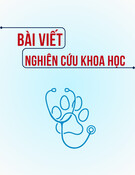










![Bài giảng Vi sinh vật: Đại cương về miễn dịch và ứng dụng [chuẩn nhất]](https://cdn.tailieu.vn/images/document/thumbnail/2025/20251124/royalnguyen223@gmail.com/135x160/49791764038504.jpg)

